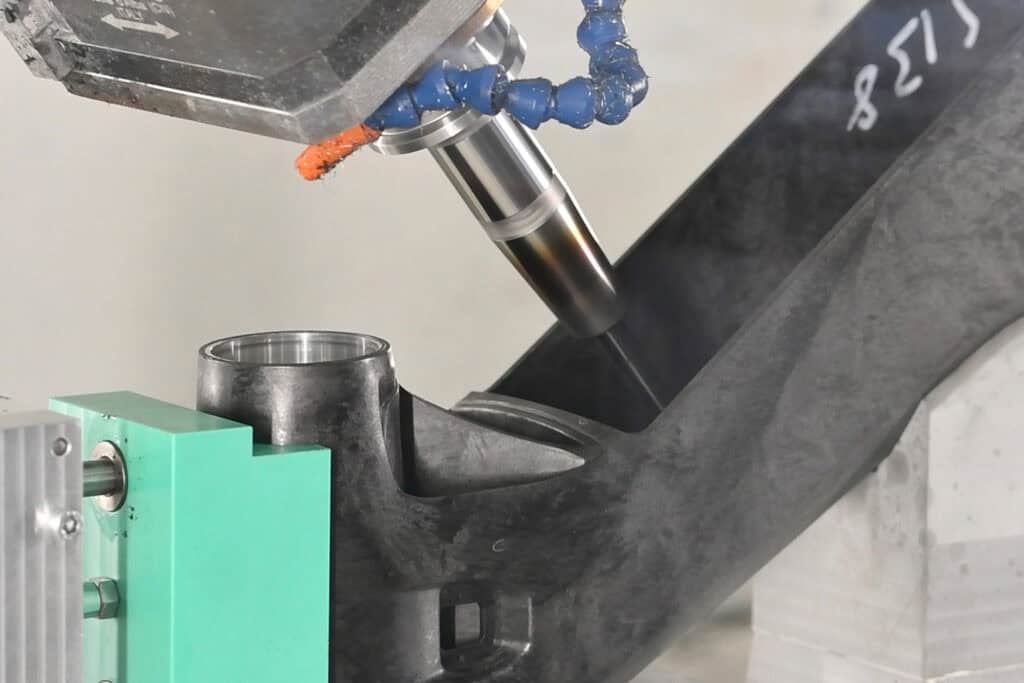Sustainability is one of the trending topics in the cycling industry. One area that is coming into focus in this context is the materials being used. With components made from thermoplastic polymers, the German company Lehvoss offers a light, less carbon-intensive approach.

At the beginning of 2024, cyclists Mike Fuchs, Oliver Gehrking and David Arlandis set out on a 1,300-kilometer e-bike expedition through the Erg Chegaga, the largest sand desert in Morocco. Their adventure, however, was not solely about sports; it also had a technical aspect. They aimed to demonstrate that bicycle frames and components made from thermoplastic polymers can withstand even the harshest conditions.
“The Buddy X1 Frames made from our thermoplastic polymers are lighter than aluminum frames. Additionally, they have a 68 percent smaller carbon footprint compared to traditional frames. And at the end of their lifespan, they are fully recyclable—this applies not only to the frames but to all our components made from thermoplastic polymers,” says Eric Folz, Product Manager for long fibre thermoplastics (LFT) at Lehvoss Compounds, a business unit of Lehvoss that has been specializing in the production of thermoplastic polymers for decades, and one that is now also aiming high in the bicycle sector.
Lehvoss: A long-standing German company
Lehvoss, with its parent company Lehmann&Voss&Co., is a long-standing German company founded in 1894. Today, the group employs almost 650 people, with an annual turnover of 465 million euros in 2023. In recent years, the increasing focus on sustainability in the cycling industry has prompted the company to gain a foothold in the two-wheeler sector. “We’ve observed a shift in customer awareness. Consumers are increasingly asking about carbon footprints and where their bicycle parts are manufactured. As a traditional German company, we see great advantages in this,” says Folz.

In this context, he highlights the large product portfolio, which extends well beyond the frames used in the e-bike expedition through the Moroccan desert. It also includes components for shift and brake levers, front and rear derailleurs, saddles, pedals, and even e-bike motors. “Our high-performance materials and compounds offer material alternatives for all points along the value chain,” Folz explains. “With engineering plastics and special plastic compounds whose material density and strength level are equal to metals or— especially compared to light metal alloys—in some cases significantly superior, our partners can exploit potentials in terms of optimized component development, strength and weight that were previously undiscovered or technologically impossible to realize,” he adds.
More visibility for thermoplastic polymers
His goal for the future is to increase the visibility of the technology, as he believes that thermoplastic polymers have great potential in the cycling industry. “In my opinion, we are on the brink of establishing a large-scale market. Some manufacturers are already in the market, more will follow,” he says. “Production is still relatively expensive at the moment. However, once a mass market is established, the overall costs may even be lower than imported metal frames—a forward-looking perspective for the coming years.”
More news and updates from The Show Daily team:
- Taipei Cycle d&i awards 2025: And The Award Goes To…
- Ananda: Tailored e-Drive Systems to Power Your Next Bike Project
- Europe Market Data: Large-scale Discounting Erodes Turnover
- New TA5 Standard: A Thru-Axle For the Masses
- Velo & SRAM: Uniting to Advance Sustainability


